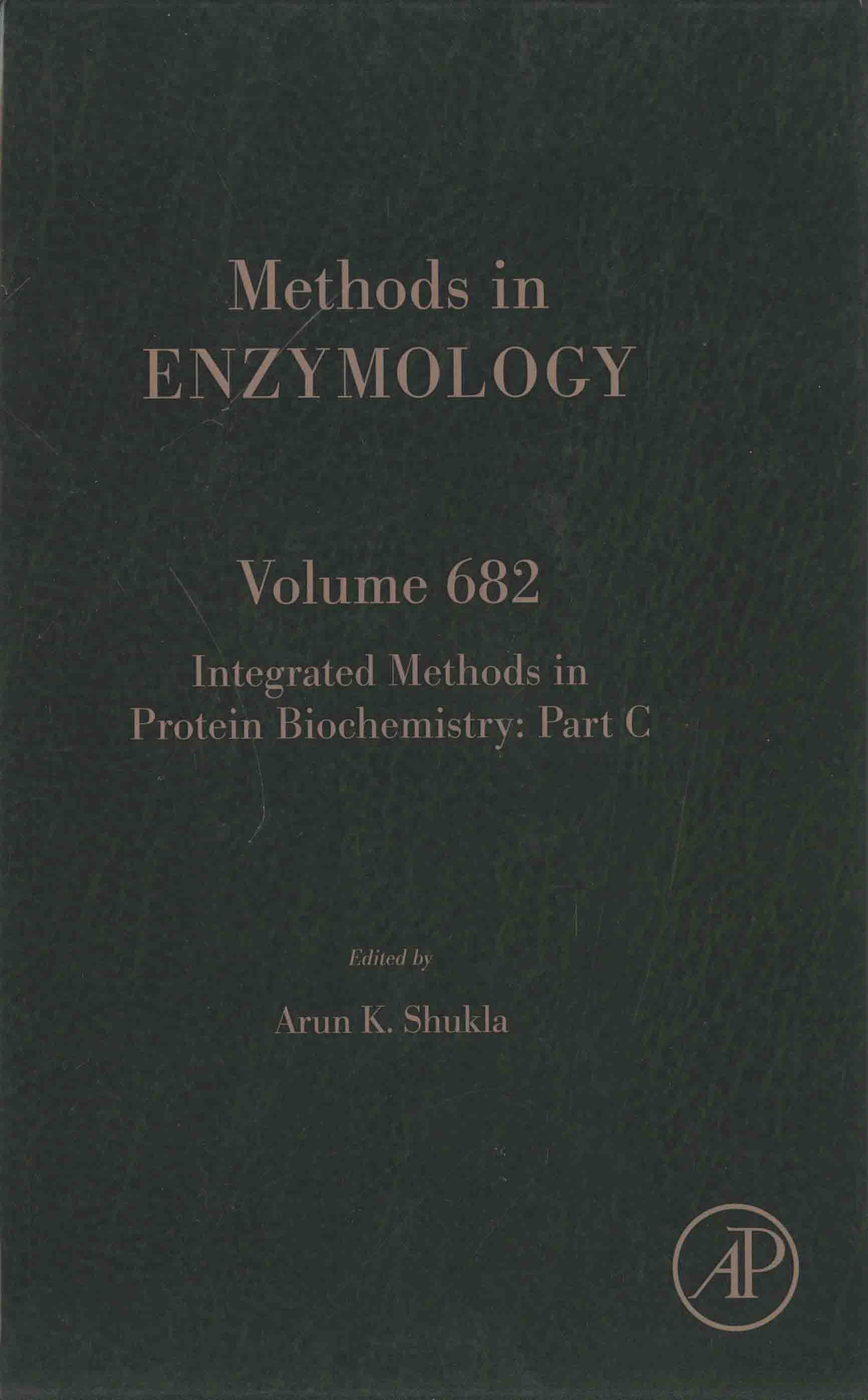 |
Integrated methods in protein biochemistry. Part C / edited by Arun K. Shukla. -- Cambridge, MA : Academic Press, 2023. – (58.17435/C719/v.682) |
Contents
Contributors
Preface
1. Nanoluciferase-based complementation assays to monitor activation, modulation and signaling of receptor tyrosine kinases (RTKs)
1. Introduction
2. Before you begin
3. Materials and equipment
4. Step-by-step method details
5. Expected outcome and quantification
6. Advantages
7. Limitations
8. Alternative methods/procedures
Acknowledgments
References
2. Molecular regulation of PLCβ signaling
1. Introduction
2. Structure of PLC
3. Isoforms and splice variants of PLC
4. Physiological and pathological role of PLC-mediated signaling
5. PLCβ activation and regulation
6. Synergistic activation of PLCβ by Gαq and Gβy
7. Modulation of Gαq and Gβy-governed PLCβ signaling
8. Cell-tissue-organ specific expression profiles of GPγγ and PLCβ
9. Conclusions
Author contributions
Funding information
Conflict of interests
References
3. Laminar flow-based microfluidic systems for molecular interaction analysis--Part 1: Chip development, system operation and measurement setup
1. Introduction
2. Microfluidic device development
3. Fluidic actuation
4. Fluorescence detection
5. Summary and conclusions
References
4. Spectroscopic analysis of the mammalian enzyme cysteine dioxygenase
1. Introduction
2. Spectroscopic analysis of CDO
Acknowledgments
References
5. DeGlyPHER: Highly sensitive site-specific analysis of N-linked glycans on proteins
1. Introduction
2. Before you begin
3. Key resources table
4. Materials and equipment
5. Step-by-step method details
6. Quantification and statistical analysis
7. Expected outcomes
8. Advantages
9. Limitations
10. Optimization and troubleshooting
11. Safety considerations and standards
12. Alternative methods/procedures
Acknowledgments
References
6. Sample preparation for structural mass spectrometry via polyacrylamide gel electrophoresis
1. Introduction
2. Sample preparation for top-down mass spectrometry by PEPPI-MS
3. Sample preparation for native mass spectrometry by PEPPI-MS
4. Sample preparation for cross-linking mass spectrometry by PEPPI-AnExSP
5. Summary and conclusions
Acknowledgments
References
7. High-throughput screening of glycosynthases using azido sugars for oligosaccharides synthesis
1. Introduction
2. Screening using cyn regulon based azide detection method
3. Screening using click chemistry based azide detection method
4. Summary and conclusions
Acknowledgments
References
8. Rational design, production and in vitro analysis of photoxenoproteins
1. Introduction
2. Rational design of photoxenoproteins
3. Synthesis of phenylalanine-4'-azobenzene AzoF
4. Heterologous gene expression and purification of photoxenoproteins
5. Characterization of photoxenoproteins
6. Evaluation of photocontrol
7. Notes
Acknowledgments
References
9. Chemical and structural approaches to investigate PTEN function and regulation
1. Introduction
2. Biochemical assays to determine the conformational state of PTEN
3. Structural basis for N-terminal function and regulation
4. Structural basis for regulation of PTEN by C-terminal phosphorylation
5. Summary and future directions
Acknowledgments
References
10. Analyzing protein posttranslational modifications using enzyme-catalyzed expressed protein ligation
1. Introduction
2. General methods and statistical analysis
3. Purification of subtiligase
4. Synthesis of peptide using solid phase peptide synthesis (SPPS)
5. Generation of POI C-terminal thioester
6. Enzyme-catalyzed EPL, and affinity purification of protein ligation product using biotin tag
7. Semisynthesis and biochemical analysis of phospholipid phosphatase PTEN with site-specific C-terminal phosphorylations
8. Summary and conclusions
References
11. Application of hybrid biophysical-biochemical methods to unravel the molecular basis for auto-inhibition and activation of protein tyrosine phosphatase TCPTP/PTPN2
1. Introduction
2. Phosphatase assay
3. Chemical cross-linking coupled with mass spectrometry (CX-MS)
4. Hydrogen-deuterium exchange coupled with mass spectrometry (HDX-MS)
5. Validation of HDX-MS data by phosphatase assay
6. Conclusion
Acknowledgments
References
12. Multiplex substrate profiling by mass spectrometry for proteases
1. Introduction
2. General method and statistical analysis
3. Examples of MSP-MS in the literature
4. Conclusions and perspectives
Acknowledgments
References
Bibliography of MSP-MS literature
13. Protein labeling and crosslinking by covalent aptamers
1. Introduction
2. Equipment and materials
3. Protocol
4. Summary
5. General safety statement
Acknowledgments
References
14. Laminar flow-based microfluidic systems for molecular interaction analysis—Part 2: Data extraction, processing and analysis
1. Introduction
2. Data extraction
3. Data processing
4. Data analysis
5. Summary and conclusions
References
15. A streamlined protocol for expression and purification of wild-type β-arrestins
1. Introduction
2. Materials, methods, and results
3. Potential problems and troubleshooting
4. Concluding remarks
Acknowledgments
References